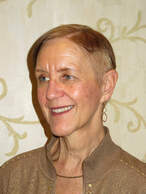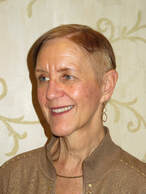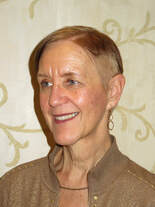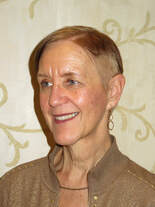1 Comment
 Saloma Furlong Guest Blogger from About Amish and The World Beyond There is no greater agony than bearing an untold story inside you. ~ Maya Angelou This past weekend I attended a Safe Communities retreat in Ephrata, Pennsylvania at the beautiful Hurst Bed and Breakfast. The retreat was led by Linda Crockett, Lyn Barrett, and Mark Harris, and it was exactly what I needed at this time in my life. The retreat was described this way: "Resistance, Renewal and Re-emergence is an apt descriptor of the cycle of seasons, as well as our lives as we heal from trauma. We find ways to resist what threatens [to] devastate our lives; we build our resilience muscles as we push back against despair and loneliness to make space for life; and we re-emerge not as we once were, but as someone who has been made strong at the broken places and moves into a different stage of life." Before this retreat, I had a negative view of the word “resistance” in terms of healing from trauma. To me that word meant resisting the hard work of healing, rather than facing the pain one has been through.  Linda Crockett Director, Safe Communities Children are at an increased risk for sexual abuse during the holidays. Before you are caught up in the whirlwind of holiday preparations, take a minute to read this blog post. It may help you save a child from a trauma that can have a lifetime impact. First, it is important to know that sexual abuse includes a broad range of behaviors in which an adult or older child (or one with more social power) engages a child in sexual activity of any kind. This encompasses both touching and non-touching offenses. Why does risk increase during the holidays?
 Linda Crockett Early this year, my friend and colleague Lyn Barrett asked me to write the forward for her upcoming book, Crazy: Reclaiming Life from the Shadow of Traumatic Memory which is now available for pre-order. It was a great privilege to do so, and I am sharing the forward in this blog post. It’s a must-read book for survivors of childhood trauma and all who walk with them. FOREWORD In her unforgettable memoir, Lyn Barrett helps us grasp how childhood trauma can be deeply hidden from our consciousness, and that the deeper truth of what happened can be discovered and healed even when cognitive memory remains elusive. Lancaster County is home to the largest Amish population in the United States with 40,525 Amish in 2020. Yet they are greatly underserved in accessing resources to help them prevent the alarmingly high prevalence of sexual abuse of children in their community.
Although published large scale studies in this population do not exist, we have good reason to believe that rates are significantly higher than those cited in the Adverse Childhood Experiences Study (22% of boys, 25% of girls). In fact, Amish we talk to frankly admit that child sexual abuse is “out of control” in their schools and communities. Our meetings in Amish homes continued to increase during 2021. We have gathered with more than 125 Amish in small groups in barns, around kitchen tables, and on front porches to hear their stories. As we become known as trustworthy people, we receive calls from Amish we’ve never met with, asking for our help.  March 1, 2021 At Safe Communities, we hear from many survivors of child sexual abuse (CSA) about providers of mental, dental, and medical care who fall far short of their claims to be “trauma-informed”. It has become so ubiquitous to hang a “trauma-informed” label around a professional practice that one would expect things had improved dramatically. Most CSA survivors are still waiting for that to happen – and in the meantime, often foregoing much needed treatment because the risk of retraumatization by a provider is too high. I am not speaking about the obviously egregious violations such as sexual boundary crossing, but the every-day ways that licensed, credentialed providers fail to meet the basic safety requirements of adult survivors of CSA, who have unique needs that are not addressed by a “one size fits all” approach. What may be trauma-informed treatment for a combat vet, a natural disaster victim, someone who suffered physical abuse in childhood, or even an individual who experiences rape for the first time as an adult does not easily transfer into knowledge about adult survivors of CSA. The Trauma-Informed PA plan Governor Tom Wolf released in 2020 does nothing to address this specific population, but once again sweeps everyone who has suffered various types of childhood trauma into one bucket of what are called Adverse Childhood Experiences. It recognizes the cultural and historical traumas of racism, generations of poverty and other systemic issues but fails to address the systemic intergenerational sexual trauma that impacts one in four girls and one in six boys in childhood, crossing all boundaries of race, economic status, gender or class. Childhood sexual abuse is recognized as a distinct form of maltreatment with unique interpersonal characteristics (e.g., boundary violations, betrayal, sexual traumatization, stigma, secrecy) that result in developmental consequences not associated with other forms of maltreatment. As such, a large body of literature has documented negative psychological outcomes for sexually abused children. There is also evidence that CSA is more strongly linked to later mental health problems than other forms of abuse. Estimates suggest that approximately 37% to 53% of sexually abused children eventually develop PTSD and research shows that most of these kids, when referred to treatment, have experienced partial PTSD symptoms. Sexual abuse has been associated with traumatic reactions that may include re-experiencing the abuse through memories or dreams and actively attempting to avoid situations or stimuli that remind them of the abuse. i These survivors have unique needs for control in relationship and do not fare well under the hierarchical model of many professional practices. In a trauma-informed, provider-patient relationship, Harris and Fallot (2001) point out that leaders must also act to create safety by “eradicating the traditional service relationship that replicates some of the most damaging dynamics of childhood trauma … in that, survivors must often accept an unequal relationship in order to avoid worse treatment”.ii In addition, it is not adequate for a provider within a practice to be trauma-informed if the practice or organization around them is not. A wrong look or insensitive comment – real or imagined – from a receptionist having a bad day, as an example, can derail the treatment process for survivors who quickly move into fight, flight, or freeze mode. Survivors ready for care then interact with a stressed organizational system not prepared to deliver treatment.iii The physical environment itself must be carefully evaluated and adjustments made if a provider is to be trusted by survivors. Waiting areas must be welcoming, soothing, and comfortable - not cold, clinical, and crowded. Survivors describe practices with waiting rooms akin to impersonal airport boarding areas. In fact, the pandemic necessitated six feet of distance between waiting patients has been a real blessing for many survivors, as has Telehealth. Finally, easy trauma triggers like directing a survivor to sit on a chair or lie on a table in a treatment room where they cannot see who is entering through the door, can be avoided. Loud noises such as a dental drill, feeling “trapped” in a closed MRI, or being told to position their body or mouth in some particular way can also be highly problematic for survivors. The touching involved in dental and some medical treatment must be carefully explained before contact is made, consent must be obtained, and the survivor given explicit permission to tell the provider to STOP at any time. Even minor touching such as a pat on the shoulder should be avoided, as should a provider getting in too close of a proximity to a survivor while discussing their needs. Furthermore, a considerable percentage of CSA survivors are highly dissociative. Do not expect them to be able to easily navigate their way through a large complex of parking lots, hallways, and closed doors. Confusion can trigger dissociation, and the adult wandering through your complex may be “seeing” with the eyes of a six-year-old. Provide detailed step-by-step instructions about how to find your office. Do not expect survivors to “remember” what you say as they can be easily overwhelmed by a perceived “powerful” person. Write down important things you would like them to think about for future treatment or discussion. One would think that at least mental heath providers would be relatively equipped to offer a trauma-informed environment and treatment to survivors of CSA. Unfortunately, that is not the case. Very few clinicians have advanced training in treatment of adult survivors of CSA. Those who do are increasingly moving away from taking insurance into cash-pay only. And this problem does not exist simply in small cities or rural communities, but in big metropolises as well. I once searched for days, using all the mental health professional connections I could muster, to find a qualified clinician to treat a friend who was just starting to deal with recognizing that she had been sexually molested as a child. She lived in a community just outside an upscale metropolitan area – and nearly all the clinicians who specialized in treating adult survivors were booked for months ahead or were “cash only” at several hundred dollars per session. Ultimately, I managed to find a skilled provider who was a ‘friend of a friend” who agreed to see her very quickly. While I was relieved for my friend, I again faced the fact that it does quite often take this exhaustive search for a “unicorn” to find good care for a survivor of CSA. Finally, it is worth saying that there are a few providers whose capacity for a non-hierarchical healing relationship with clients is so immense that they can navigate the complex dynamics with CSA survivors even without advanced specialty training. I have been privileged to know a handful in my lifetime, and they are “rare gems.” These are people who can accompany survivors into their horrific memories of childhood sexual abuse time and again without pulling back to save themselves from the pain of hearing the atrocities a human being can inflict on a defenseless child; who articulate a strong and clear advocacy for the survivor that clearly communicates they are on their “side” and are not concerned with ‘fairness’ for the offender; who are willing to stay with the survivor for the long haul – often measured in years of intense and under-reimbursed treatment; who go the extra mile with communication outside office hours when it’s needed while keeping appropriate boundaries in a way that teaches what healthy and flexible boundaries actually are. But it should not take a search for a unicorn or discovery of a rare gem for survivors to feel safe in a provider’s environment and to receive survivor-sensitive care. I call on Governor Wolf to address this critical gap in the 2020 PA Trauma Informed plan, on insurance companies to recognize the need for highly skilled long term affordable treatment, and for all providers to learn what it means to be “trauma informed” for the roughly 25% of your patients who carry the deep and invisible wounds of childhood sexual abuse. We want to hear from you! If you are a survivor, we would love to hear about your personal experiences in trying to access trauma informed care. Please email [email protected] and enter “Trauma Informed Care” in the subject line. We also encourage any provider who wants to learn more about this issue to get in touch. i EmilyTrask, Kate Walsh & David DiLillo (2011) Treatment Effects for Common Outcomes of Child Sexual Abuse - Current Meta-Analysis, Aggression & Violent Behavior ii Jacqueline S. Barnes & Morgan Andrews (2019) Meeting Survivors Where They Are: The Vital Role of Trauma-Informed and Competent Clinicians in Primary Care, Journal of Aggression, Maltreatment & Trauma, 28:5, 601-612, DOI: 10.1080/10926771.2019.15875 iii Ibid  The terror and agony faced by four-year old Jessica Mast as her parents and another couple beat her every day for two weeks in the name of “godly discipline” is unimaginable to most people – except for survivors of religions that embed submission and obedience to the “will of the father” into daily practices for women and girls, reinforced with bodily terrorism if necessary. Jessica will never be one of those survivors because in the end, after yet another beating with her father’s belt, her little head was held beneath the icy water of a pond. She was dragged to the bank and left there to freeze. You might be tempted to write this off as mental illness of the murderers, or to a horrific and unexplainable anomaly. Please don’t. While mental illness may be in play here and most cases of child abuse do not end in death – what happened here was years in the making, as the adults who killed her, while also beating her two-year-old sister and at times, her mother – were products of a conservative Plain culture where physical abuse of children to break their will is broadly accepted. The church all four adults attended, unsurprisingly, has distanced itself from any responsibility for this child’s death. According to the Sheriff, the actions leading to her death are “not condoned” by the church.  As a woman survivor of childhood sexual and other violence, and the founder of Safe Communities, I am committed to changing the cultural conditions that allow the sexual violation of children to continue, and survivors to be disbelieved and shamed. But as heavy and challenging as that work is, it is not enough. As a white leader of a nonprofit, its critical I also work to change the cultural norms that allow racism to continue, the most extreme and heart wrenching examples being the killing of unarmed Black people, including children, at the hands of police and extrajudicial groups of white men. And that means living more fully into the complicated intersection of ending sexual violence and racism. While legislative changes are necessary, and police reform is critical, we simply can’t criminal justice our way out of this. We can’t just get rid of the “bad apples” in policing or the “predators” in churches, schools, organizations and communities. No amount of police reform or mandated reporter or diversity or anti-sexual harassment training will change the fundamental problem. To stop sexual and racial violence, we must change the cultural historical norms that allow them to operate. Problems that are systemic cannot be fixed using the same systems and mindsets that created them. by Linda Crockett As a survivor, I am leading Safe Communities. Working with friends, partners and allies, we exist to end child sexual abuse and to create healing spaces for survivors – and that will not stop even as we live in this time of a global pandemic, which is scary for everyone. The virus is an invisible enemy that we can’t control, even as we try frantically to reduce risk through various tactics. No one is immune. Low-wage or hourly/contracted employees are particularly vulnerable economically. Older adults and those with underlying medical conditions are more vulnerable to severe illness, based on what we know right now. Less discussed has been the psychological vulnerability of survivors of sexual violence. =Reposted from the blog of Humanitarian Social Innovations on 1/2/2020, written by Carina Bonasera.
Humanitarian Social Innovations is excited to welcome Safe Communities to our network of social entrepreneurs. As a new year — and decade — begins, Humanitarian Social Innovations is excited to introduce Safe Communities to our network. The group works to prevent and address child sexual abuse (CSA), educate churches and youth-serving organizations about keeping children safe, and provide resources for survivors of abuse to heal. The statistics on child sexual abuse are jarring. Studies indicate that up to 25 percent of girls and 20 percent of boys may be sexually assaulted before the age of 18, and most of the time, the abuser is someone that they know and trust. While institutions like churches and youth groups are supposed to be safe places, oftentimes, they can actually enable abuse. |
|
© Safe Communities. All rights reserved, 2021.
|
subscribe to email updates |




 RSS Feed
RSS Feed
